Not everyone wants a new production trike, indeed there are some amazingly tempting older designs that come up for sale at times. But faced with a snap decision to buy or not, what should one look for while doing a “walk around”?
First impressions count, but you never know – there might be a real gem under all that encrusted grot…
First up, remember that many parts are consumable, so worn tyres, chain, cassette, cables, brakes etc are not in themselves warning signs, and are normally replaceable quite economically. And whilst we are mainly talking trikes, much of the info applies to bikes.
Bear in mind too, that old(er) trikes may be equipped with components that are no longer made or supported, and sometimes replacements can be a challenge. Early disc brake designs and drum brakes other than Sturmey Archer are the worries here. Almost anything else can be replaced with more modern substitutes.
Tyres and wheels.
Look at the way the tread has worn. Is it even? Incorrect front wheel alignment will show with the tread wearing on the inside or outside of the tyre. (Inside for toe-out, outside for toe-in.) Pick up each wheel and give it a spin – it should spin smoothly, quietly, and take ages to slow down. This will quickly show up dragging brakes, rough bearings, or a freewheel that isn’t so free.
Check the brake operation for smoothness. New cables will work wonders here.
Chain and Gears.
What’s the chain like? Covered in grease, dirt and feathers? Or sparkling clean and shiny. Or a solid bar of rust… Normally it’s somewhere in the middle, it’s rare to find a really rusty chain, or a clean one.
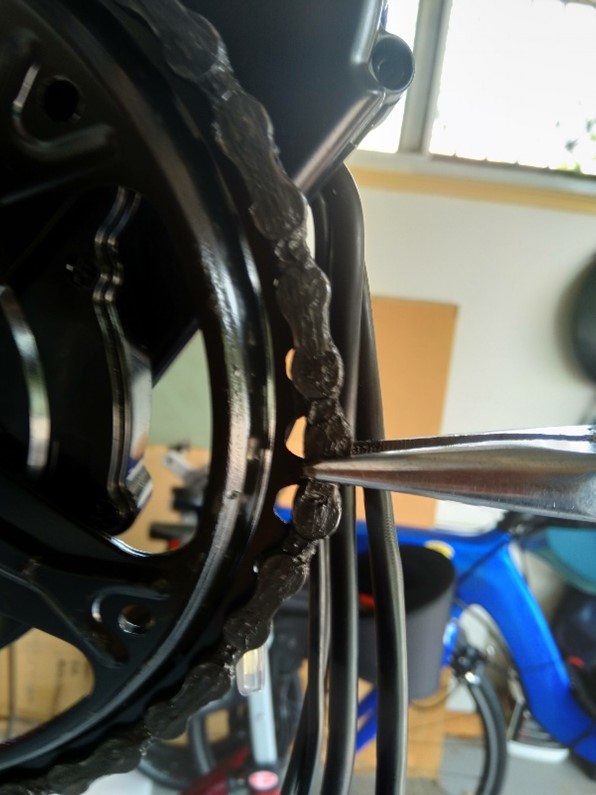
If you’re carrying a 12” rule in your pocket – and who doesn’t – chain wear is easy to check. Alternatively shift the chain onto the big chainring and see how far the chain can be lifted off the ring.
Support the rear wheel off the ground, and hand crank the transmission and see if the gears all shift properly. Very often they won’t, but in 90% of cases a clean, and adjust with new cables restores proper operation.
It’s hard to check the wear on the cassette, but the chain condition will give a few clues – a badly worn chain will probably have a badly worn cassette too.
Frame and steering.
This is where all the expense and disappointments lurk. But take heart, there are many things that can be repaired successfully.
Lift the front of the trike and check the steering is smooth and free over its full travel and without freeplay in the steering linkage, then turn the trike on its side and look at the underside of the frame.
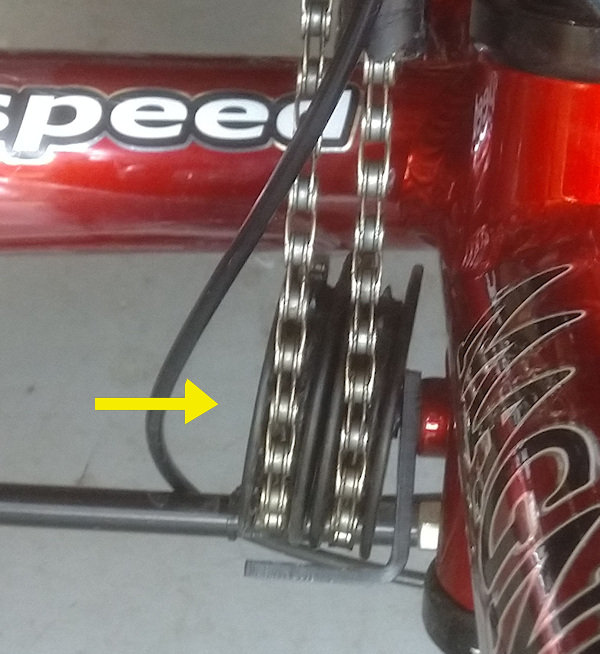
Pay close attention to the welded areas:
- where the cross member joins
- where the adjustable boom clamps are
- the chain idler support
- the area where the rear chainstays meet the main spine of the frame,
- and anywhere the chain crosses the frame.
It’s highly unlikely you’ll see anything exciting like a big crack, but very fine cracks in the paintwork can be an indicator that all is not well inside. These cracks are telling us that it’s almost full time and game over. This aging frame had to be retired after a full life.
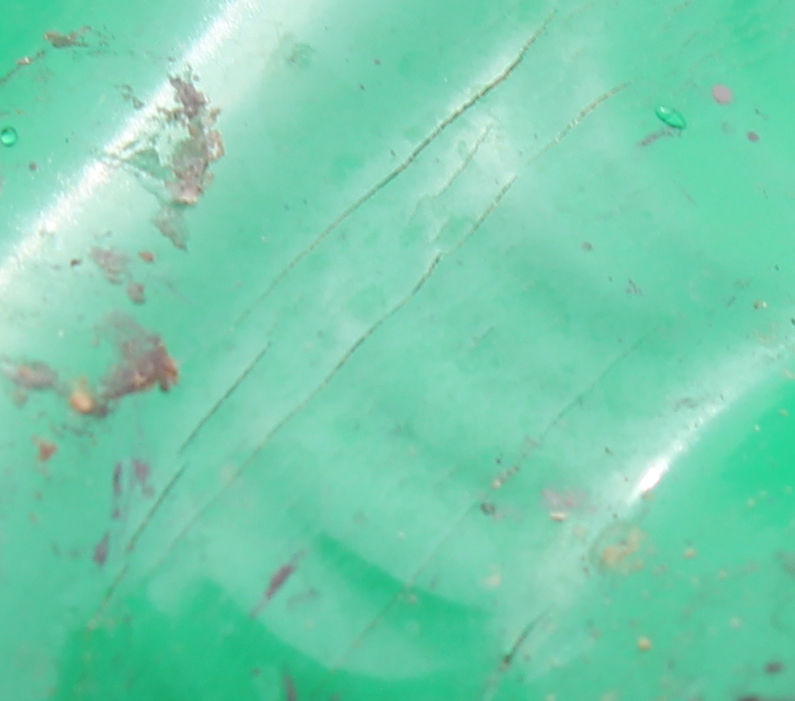
While damage in the high stress area of the crossmember join can mean the end of an aluminium frame, steel frames are more forgiving. Steel can often be weld repaired locally, but aluminium frames are normally heat treated after manufacture and do not respond well to weld repairs.
The most common problem is at the boom adjusting clamp. Often there is a threaded boss welded on that forms the clamp. This does tend to tear away from the parent metal if it has been frequently tightened (or over tightened). Most manufacturers these days have moved to a separate clamp arrangement, and this can often be retrofitted, or an equivalent thing made.
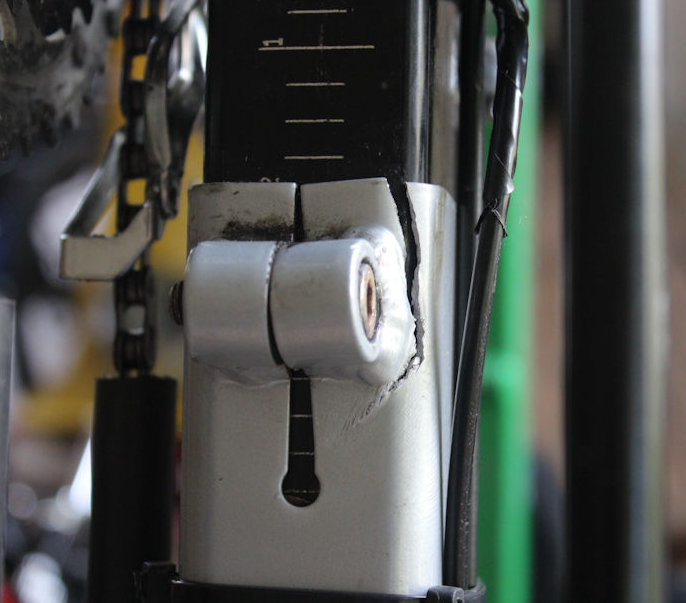
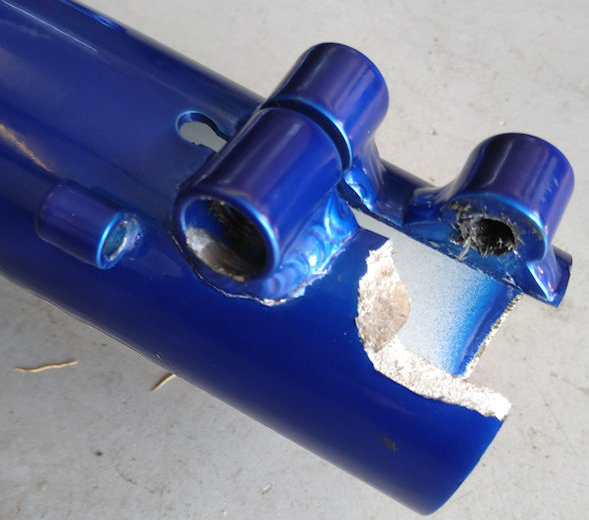
Work arounds to get going again are also a bit of a warning – this handlebar clamp was certainly a concern, together with the manufacturer replacing this design with a more robust system:
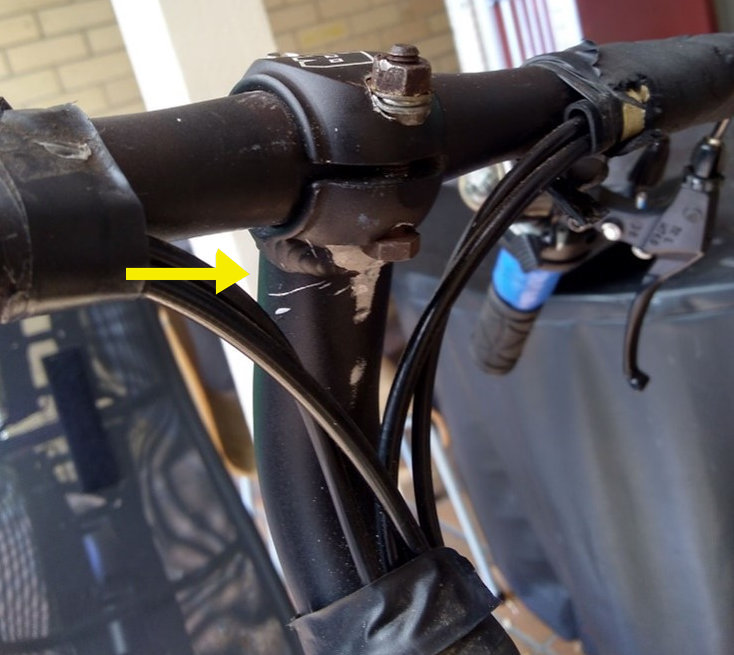
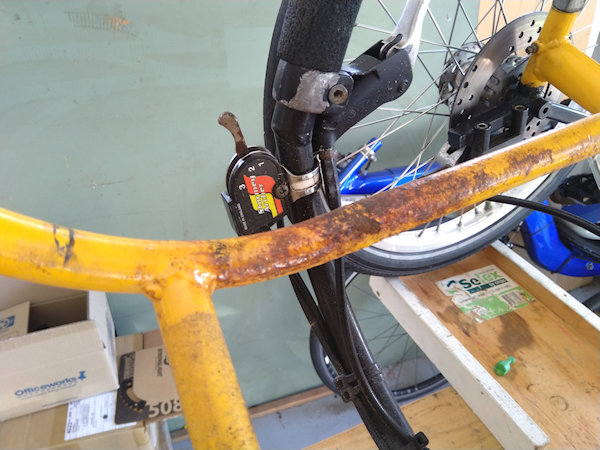
If the frame has been wrapped in tape or foam, there could be anything hiding underneath.
This rusty seat frame tubing was revealed when we took off the seat mesh.
E-assist Kits.
If the trike has an e-kit fitted, find out if the kit complies with the legal requirement in your location.
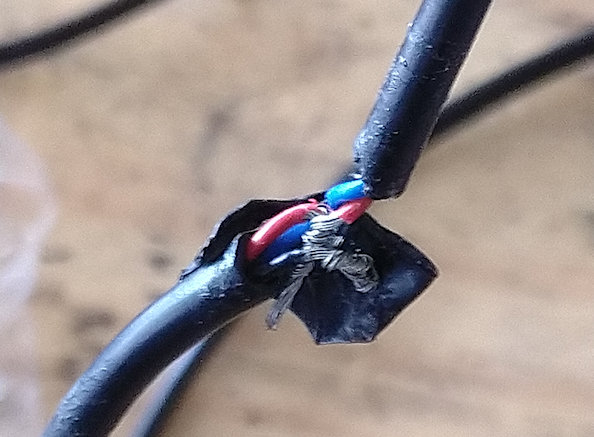
Wiring covered with multiple wraps of electrical tape waves a red flag to me, it’s worth having a look inside (maybe not at the pre-purchase stage but later if you do the deed), sometimes there are interesting things hidden in there.
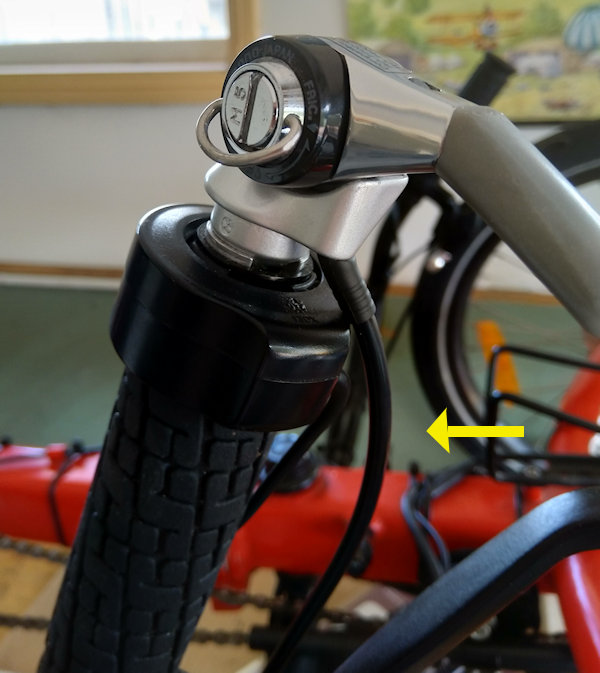
And sometimes when the assist kit has been installed it doesn’t play nicely with other controls – the derailleur cable here has been badly kinked and crushed and refused to slide:
While some of the photos above look pretty bad, all bar the very fine cracks in the green weld were returned to service without too much drama.
Buying a used trike (or bike) can be a rewarding experience particularly if it is something a little bit different. A little bit of TLC and the trikes are back in the business of giving their new owners plenty of “recumbent grins”.

looking for a trike. not too wide. doesn’t have to be second hand.
iam new to the recumbent market
cheers
Roger 0424255745